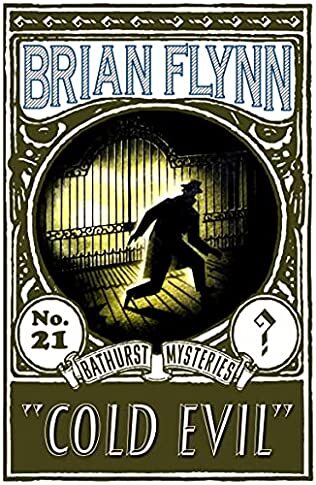Cold Evil

A review of Cold Evil by Brian Flynn
What I like about Brian Flynn, a sadly neglected writer from the Golden Age of detective fiction and now enjoying a renaissance thanks to the sterling efforts of Steve Barge and Dean Street Press, is his willingness to experiment, to change style, mix things up. He shows a deep appreciation and understanding of the early masters of his craft, especially Conan Doyle, and some of his books veer into the territory previously occupied by the much-derided penny dreadfuls. It might well be that this unpredictability cost him readers, especially if an experiment fails to reach the previously high standards he had set.
I am not quite sure what to make of Flynn’s Cold Fear, the 21st in his long-running series featuring the amateur sleuth, Anthony Bathurst, ALB to his friends and family, originally published in 1938. At its kernel there is a cracking story, but the reader has to work hard to find it. It is a very atmospheric book, mist swirls across the moors and heavy frost makes it crunchy underfoot during late December and early January. The Gothic feel to the tale is set in the first chapter when six worthies gather at the vicarage of St Crayle and swap ghost stories. Martin Burke’s tale of a murderous Indian chimera chills his auditors to the bone and raises the concept of the projection of evil as a murder weapon rather than a gun, knife, or poison.
As if to prove the point, one of the party, Chinnery, disappears on the moor as he walks home. His body is found a week later, with a look of terror on his face, but his body is unmarked save for a red mark behind his ear. It is thought that Chinnery had lost his way and froze to death but Bathurst, who had by now been called in to assist in the search for Chinnery, is not so sure and suspects foul play. Then another member of the party is also found in a semi-frozen state with the same red mark behind his ear, but he survives. A third victim, a woman who was not at the party but is a Justice of the Peace is not so lucky, found on the moor, frozen with the tell-tale mark.
The story is narrated by Bathurst’s cousin, Jack Clyst, and this is one of the book’s weak points. As Bathurst proceeds with his investigations, he disappears, leaving Clyst in the dark. He can only speculate what is going on and follow the clandestine instructions that his cousin sends to him from time to time. This means that the results of Bathurst’s investigations, the identity of the culprit, what really happened to the victims, and what the motivation is are presented to the reader as a fait accompli with no attempt on Flynn’s part to give the reader the opportunity to work matters out for themselves.
Bathurst, a master of disguise, lures the culprit into making a mistake, albeit almost at the cost of the sleuth’s life, and all is revealed. For experienced readers of the genre there are obvious inferences as to who the culprit is but the motivation is produced like a rabbit out of a hat.
The other disappointing features of the book are its pacing, there are long periods where the protagonists sit around waiting for things to happen, allowing them to discourse on and develop theories about the ability to spread evil through the power of thought and mass suggestion – perhaps an oblique reference to the worsening political situation in Europe – and the dialogue between ALB and Clyst, where both spar with each other and seem to have digested a compendium of literary quotations for breakfast.
For those anticipating an extravagant Christmas this year, the book is a salutary read as it features one of the gloomiest and unfestive Christmases in literature. But for the arrival of some carol singers you would not know it was any other day.
My feelings for this book are rather like receiving a perfectly cooked steak only to find the vegetables are soggy and cold. One very much for the aficionado.



